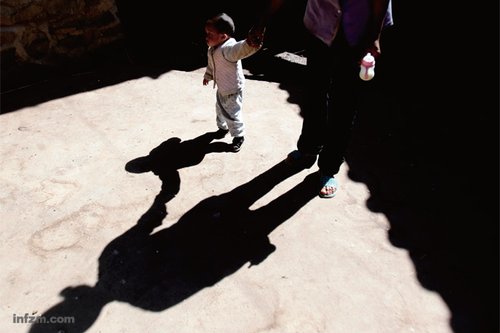
Malnutrition before the age of two may cause problems which cannot be reversed by diet supplements after children grow to a certain age.
(Ecns.cn) -- More than 10 million Chinese preschoolers, most of whom live in poverty-stricken areas, are suffering from malnutrition, which can cause stunted growth, lowered intelligence and even mental retardation, according to a report released by the Chinese Center for Disease Control and Prevention (CDC).
The population of stunted children in China is second only to that of India, and statistics show that infants from 6 to 11 months old are now more likely to suffer from malnutrition here than in the past.
Inflation, lack of breastfeeding and substandard infant formula are among the major causes of the problem. And although the government has done much to improve the nutritional intake of schoolchildren, there is still a long road ahead, particularly in rural areas.
Irreversible effects
Rong Tongxi, a three-year-old boy in Ledu County of northwest China's Qinghai Province, plays happily with the other children in the neighborhood. But because he is only 84 centimeters tall and weighs only 9.4 kilograms, his grandparents are worried about Rong's future, notes the Southern Weekly.
Rong is a typical stunted child, whose physical features are far from the average growth standard established by the World Health Organization. According to the WHO, a three-year-old child should be between 91.1 and 98.7 centimeters tall – Rong is seven centimeters shorter than the minimum.
Ledu is a national-level impoverished county, where a large proportion of the local children are shorter than average. According to Rong Dequan, a doctor in the county's Shangzhangfang Village, there are seven children who are six years old, but three of them have short statures and are underweight.
Since stunted growth is a common sight in the village, many parents think it is a normal phenomenon and are unaware that it is a sign of malnutrition. They are also unaware that malnutrition before the age of two may cause problems which cannot be reversed by diet supplements after children grow to a certain age.
And because the damage to a child's development is permanent, that child will never learn, nor earn, as much as he or she could have if properly nourished early in life.
More surprisingly, some parents even think that stunted growth is a genetic disease, but it can in fact be prevented from pregnancy, said Ms. Gillian Mellsop, UNICEF Representative to China.
According to the latest CDC report, 9.9 percent of Chinese children under the age of five are suffering from stunted growth, and their numbers have been increasing since 2010.
The first 1,000 days
Just across the river in Ledu's Gonghe Village the situation is quite different, thanks to a UNICEF early childhood development project started there in August 2009.
Since then, children between six months and two years old in Gonghe have had access to essential nourishment for growth. Pregnant women have also been given free supplements to improve their health during pregnancy and lactation.
Chen Chunming, a retired official at the Ministry of Health and the creator of the "nutrition pack," said inadequate intake of certain nutrients is the main cause of malnutrition, but that supplements can prevent it by providing sufficient protein and iron.
Chang Suying, a nutritional specialist at UNICEF's China office, said the 1,000 day period from the mother's pregnancy to when the child turns two years old is critical, and that stunting caused by an inadequate intake of certain nutrients during this period cannot be reversed.
That is why pregnant women need to take supplements, to maintain adequate iron and folate levels, and they must keep doing so, because infants depend solely on breast milk, added Chang.
Moreover, it is not only a problem in rural areas, but also a headache for big cities such as Shanghai and Guangzhou, where over 20 percent of children suffer from anemia, a sign of malnutrition, noted Chang.
More efforts needed
To encourage pregnant women and young children to take the supplements, the government in Gonghe introduced a plan whereby villagers can exchange their used nutrition packs for new ones.
Statistics show that the packs have helped. The counties using them have seen a significant reduction in childhood malnutrition and a decrease in the prevalence of diarrhea, fever and respiratory infections among young children.
In a landmark decision at the end of 2011, the Qinghai provincial government announced that it would appropriate 10 million yuan (US$1.59 million) to scale up distribution of the nutritional packs to the whole province.
However, together with UNICEF's early childhood development project, this will only benefit 130,000 children across the nation, and more children in poor areas will continue to suffer from malnutrition, said Wang Huishan from the CDC.
On April 8, 2012, as part of a pilot project, the Ministry of Health decided to provide nutrition packs to children between six months and six years old in the Lvliang Mountain Area in north China's Shanxi Province, yet Chang Suying is concerned about the project's permanence and continuity.
The funds to be spent on children must be kept under careful management, since there have been cases of embezzlement, said Chang. It is good to see that participation is on the rise, but the organizations should focus more on transparency and professionalism, she added.

Copyright ©1999-2011 Chinanews.com. All rights reserved.
Reproduction in whole or in part without permission is prohibited.